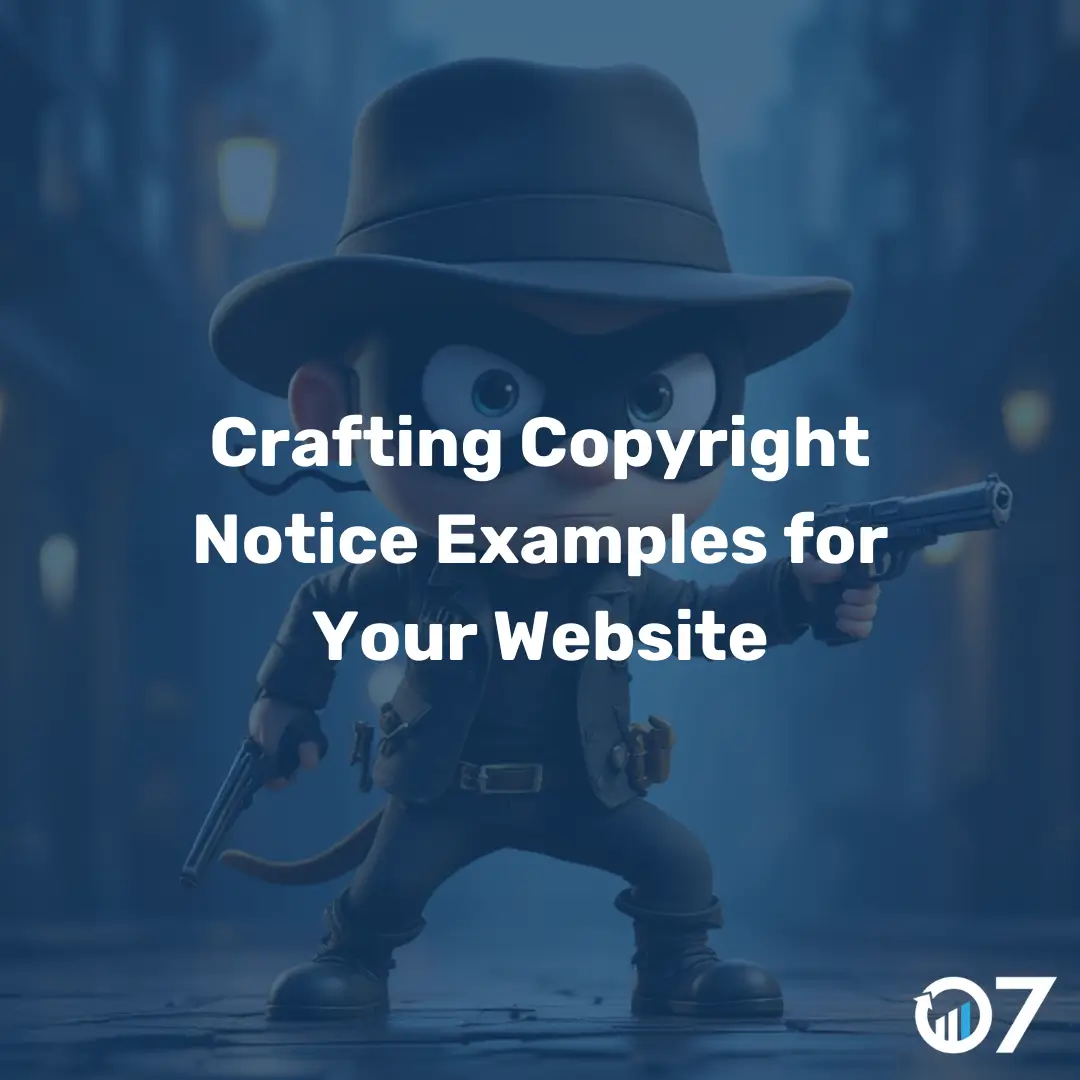Copyright notice examples are essential for protecting your website’s content. In this guide, we’ll show you how to craft a copyright notice that suits your needs.
At first glance, copyright law seems pretty straightforward — I created the content, so I own it and get to dictate how and where it’s used, right? But when you start digging into the idea of adding a copyright notice to your website, you’ll quickly discover how complex and nuanced it is.
Why You Need a Copyright Notice
Adding a copyright notice to your website is crucial for several reasons. Firstly, it serves as a public declaration of your ownership. This can deter potential infringers from using your content without permission. Secondly, it can provide legal benefits if you ever need to take action against someone who has used your content without your consent.
What Should Be Included in a Copyright Notice?
A copyright notice typically includes three key elements:
- The © symbol (or the word “Copyright”)
- The year of publication
- The name of the copyright owner
For example, a simple copyright notice might look like this:
© 2023 07 Heaven Marketing
Steps to Crafting Your Copyright Notice
Creating a copyright notice for your website is straightforward if you follow these steps:
1. Determine the Year of Publication
The year of publication is the year in which the content was first made available to the public. If your website has content from multiple years, you might want to list a range of years (e.g., 2020-2023).
2. Identify the Copyright Owner
The copyright owner is typically the individual or organisation that created the content. Make sure to use the correct legal name of the entity.
3. Use the Correct Symbol
While the © symbol is the most commonly used, you can also use the word “Copyright” if you prefer. Both are recognised internationally.
Copyright Notice Examples
Here are some examples of copyright notices to give you an idea of how to format your own:
Example 1:
© 2023 07 Heaven Marketing. All rights reserved.
Example 2:
Copyright 2023 07 Heaven Marketing. All rights reserved.
Example 3:
© 2020-2023 07 Heaven Marketing. All rights reserved.
Additional Elements to Consider
While the basic elements are essential, you might want to include additional information to provide more clarity and protection. Here are some ideas:
1. Rights Reserved Statement
Including an “All rights reserved” statement clarifies that you reserve all the rights to your content. This can further deter unauthorised use.
2. Terms of Use
Linking to your terms of use or a similar document can provide more detailed information about how your content can be used. This can be particularly useful for businesses that allow some forms of content sharing under specific conditions.
3. Trademark Information
If you have trademarks associated with your business, you might want to include a statement about them as well. This can help protect your brand in addition to your content.
Template for Your Copyright Notice
To make things easier, here’s a simple template you can use to create your own copyright notice:
© [Year] [Your Business Name]. All rights reserved. For more information, contact us at [email] or telephone [phone number].
Common Mistakes to Avoid
While crafting your copyright notice, be mindful of these common mistakes:
1. Incorrect Year
Make sure you use the correct year of publication. Using an incorrect year can weaken your copyright claim.
2. Missing Elements
Ensure that your copyright notice includes all the necessary elements: the © symbol, the year, and the name of the copyright owner.
3. Inconsistent Notices
Consistency is key. Use the same format for your copyright notice across all your web pages to avoid confusion.
FAQs about Copyright Notices
Here are some frequently asked questions about copyright notices:
Do I need a copyright notice to protect my content?
Technically, no. Your content is automatically protected by copyright law as soon as you create it. However, including a copyright notice can provide additional legal benefits and deter unauthorised use.
Can I use the © symbol if I’m not registered with a copyright office?
Yes, you can. The © symbol can be used regardless of whether you have registered your copyright. Registration can provide additional legal benefits, but it’s not required to use the symbol.
What if someone uses my content without permission?
If someone uses your content without permission, you can take legal action. Having a copyright notice can strengthen your case.
Copyright Notice Examples Conclusion
Crafting a copyright notice for your website is a simple yet effective way to protect your content. By following the steps outlined in this guide, you can create a notice that suits your needs and provides legal benefits. For more tips and advice, visit our blog or contact us at info@07hm.co.uk or telephone 01702 410663.





